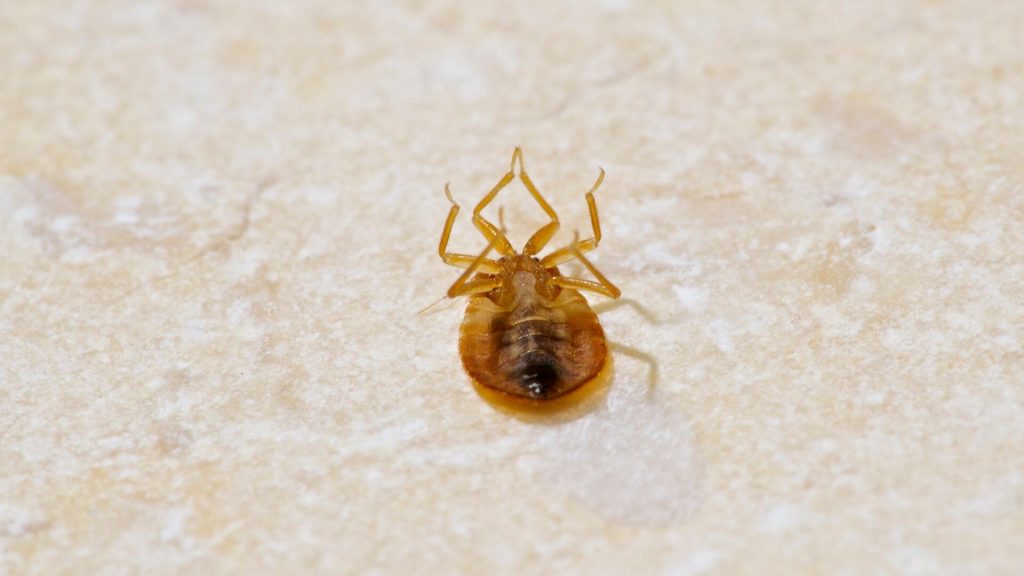Yes, bedbugs can hitch a ride on your shoes and be transported into your home. Bedbugs are attracted to the warmth and carbon dioxide that we emit, so they will often climb onto clothing or belongings in search of a human host. Once they’ve hitched a ride into your home, they can quickly multiply and become a big problem.
To avoid bringing bedbugs home with you, inspect your clothing and belongings for any stowaways before coming inside.
- Place a piece of tape over the top of your shoe
- Put your shoe in a plastic bag
- Tie the bag closed
- Repeat with the other shoe
How Do I Disinfect My Shoes from Bed Bugs
If you think you might have bed bugs, it’s important to disinfect your shoes as soon as possible. Here’s how to do it:
1. Remove your shoes and any loose dirt or debris.
2. Vacuum the inside and outside of your shoes using a strong vacuum cleaner with a hose attachment. Pay special attention to the seams and crevices where bed bugs could be hiding.
3. If possible, wash your shoes in hot water (120 degrees Fahrenheit or higher).
You can also place them in the dryer on high heat for 30 minutes.
4. Once they’re dry, spray the inside and outside of your shoes with an insecticide designed to kill bed bugs. Be sure to follow the directions on the label carefully.

Credit: www.bedbugsinsider.com
How Do I Protect My Shoes from Bed Bugs?
If you think you have bedbugs, it’s important to take steps to prevent them from spreading. One way to do this is to protect your shoes. Here are some tips on how to protect your shoes from bedbugs:
1. Keep your shoes in a sealed bag or container. This will prevent bedbugs from getting into your shoes and laying eggs.
2. Inspect your shoes regularly for signs of bedbugs.
If you see any bugs, immediately remove them and place them in a sealed bag or container.
3. If you think your shoes may be infested with bedbugs, take them off before entering your home. This will help prevent the bugs from spreading to other areas of your house.
4. Wash and dry your shoes on the highest setting possible if they become infested with bedbugs.
Can Bed Bugs Hitchhike on Shoes?
Bed bugs are small, parasitic insects that feed on the blood of humans and animals. They are reddish-brown in color, oval-shaped, and about the size of a poppy seed. Bed bugs can live for several months without feeding, and they are proficient hitchhikers.
This means that they can easily spread from one place to another by hiding in luggage, furniture, or clothing.
While bedbugs generally prefer to feed on humans, they will also bite animals if given the opportunity. Once a bed bug has fed, it will return to its hiding place to digest its meal.
Bed bugs typically hide in cracks and crevices near where people sleep or rest. This includes mattresses, headboards, box springs, nightstands, dressers, sofas, chairs—basically any nook or cranny that provides shelter and access to potential victims.
Interestingly enough, bed bugs have not been shown to transmit disease from one person to another.
However, their bites can be very uncomfortable and cause itching and swelling. In some cases, people may experience an allergic reaction to the bed bug’s saliva which can lead to difficulty breathing and/or hives (raised red welts on the skin). If you think you’ve been bitten by a bed bug—or if you spot signs of an infestation in your home—it’s important to contact a pest control professional right away for assistance.
Can You Transport Bed Bugs on Your Body?
Bed bugs are small, parasitic insects that feed on the blood of humans and animals. They are reddish-brown in color, oval-shaped, and flat. Bed bugs can range in size from 1 to 7 millimeters, depending on their age and stage of development.
Adult bed bugs are about the size of an apple seed.
While bed bugs are not known to transmit any diseases, they can cause a number of health problems for people who are allergic to their bites. Bed bug bites usually result in itchy red welts that may swell and blister.
In some cases, people may also experience nausea, chest pain, shortness of breath, and anaphylaxis (a severe allergic reaction).
Bed bugs often hide in mattresses, box springs, bed frames, furniture crevices, baseboards, behind wallpaper or picture frames—pretty much anywhere they can find nooks and crannies to squeeze into during the day. At night when you’re asleep is when they come out to feast on your blood for about five minutes before returning to their hiding spots until hunger strikes again.
Can Bed Bugs Stay on Your Clothes All Day?
Most people know that bed bugs are attracted to the warmth and carbon dioxide that we emit while we sleep. What many don’t realize is that bed bugs can also hitch a ride on our clothes during the daytime, especially if we’ve been sitting or lying down in an infested area. While it’s unlikely that bed bugs will stay on your clothes all day, they can certainly survive for several hours until they find a new host.
If you think you may have picked up some unwanted guests, be sure to check your clothing carefully before putting it back on.
Watch Bed Bugs Get Stopped in Their Tracks | Deep Look
Conclusion
The answer to this question is unfortunately, yes. Bed bugs are small insects that feed on human blood and can be found in homes, apartments, hotels, and other places where people gather. They are most active at night but can also bite during the day.
Bed bugs are very good at hiding and can often be found in cracks and crevices in furniture, walls, and floors. If you suspect you have bedbugs, it’s important to call a professional exterminator for treatment. In the meantime, there are some things you can do to prevent them from spreading.
One of the most important things is to keep your shoes clean and free of clutter. This will help to reduce the risk of bringing bedbugs into your home.

Leave a Reply